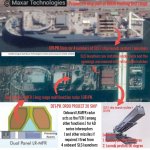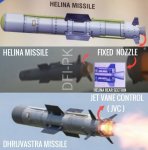Post the whole Tweet:
View attachment 17549
So four ducted intakes, all 90deg apart. This is a good thing as a symmetric design is much easier to cannisterize than a non-symmetric one. There appears to be a single guide rail running right through the lower end of the missile, 20mm in width. That is probably to assist with the smooth and safe ejection from the cannister. This is especially necessary if the cannister is larger than the missile and there is a lot of gap between the missile body and cannister walls.
The missile has an over all length of 5.15m, no big deal other missiles are longer. We don't know if the rear wings are foldable, they probably are. But if not we will have problems with canisterizing. Overall this missile can be fitted with the current VLS the Navy uses. I am comparing from the IN's POV because the really need an universal VLS and already have deployed significant amount of VLS on ships. The other services can just get a new launcher on a truck and problem solved.



 Where ?
Where ?


